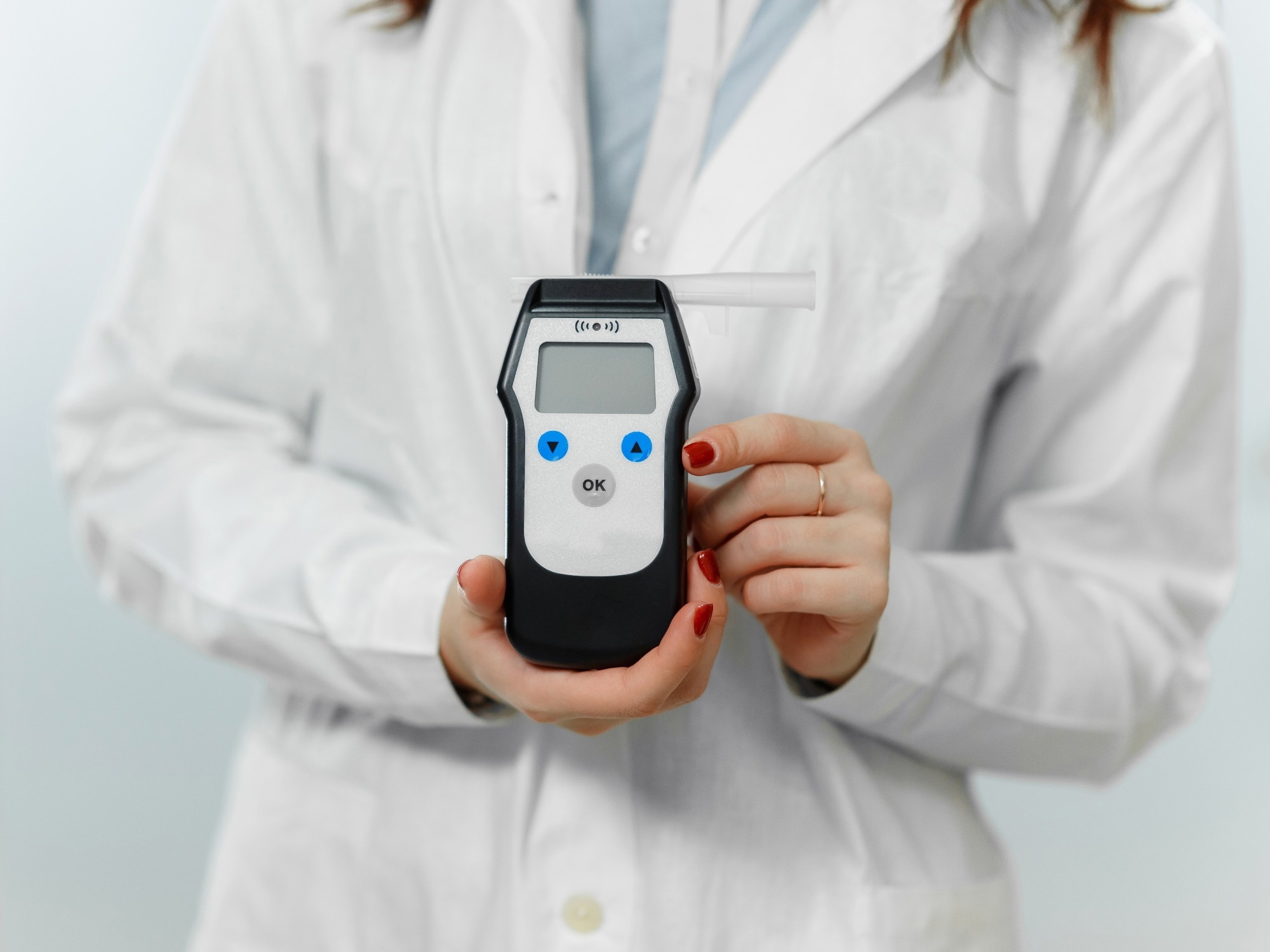Human breath and breath analysis
Significance of breath analysis
Latest Research
Looking forward
References
Over the last 20 years, the development and operation of several innovative Electronic Nose (E-Nose) applications, such as breathalyzers, in the healthcare and biological industries have accelerated fast. Innovative E-Nose technologies are giving one-of-a-kind solutions to various complicated biomedical problems nearing completion.
 Image Credit: SimdyankinEvgeniy/Shutterstock.com
Image Credit: SimdyankinEvgeniy/Shutterstock.com
Human breath and breathe analysis
Distinct regions of the human body release different odors. Various types of volatile chemicals are commonly found in the released odor. This released molecule differs from person to person based on age, sex, physiological status, and, most likely genetic constitution. These volatile chemicals can be of extreme importance. They can be used as biomarkers to analyze an individual's physiological status. These chemicals can also provide information about the progression of a disease and medical treatment. Breath, skin, sweat, urine, and other major sources of odor in the body are included in this list.
Breath is the most essential physiological specimen. The first breath analysis was performed in the year 1971. Linus Pauling, a Nobel Laureate, used gas chromatography to separate breath components, revealing that human breath is a complex gas containing more than 200 volatile organic chemicals in picomolar concentrations. Breath analysis has distinct advantages: it is quick, easy, and non-invasive. Because of passive diffusion in the lungs, it is an indicator of compound concentration in arterial blood, avoiding the need for arterial blood collection.
Breath analysis is straightforward because its composition is less complex than urine or blood and can be used to test a wide range of compounds. So far, more than 3,500 Volatile Organic Compounds (VOCs) have been found in exhaled breath. Oxygen, Nitrogen, Carbon Dioxide, and Water comprise most of the gases we breathe. Thousands of trace Volatile Organic Compounds (VOCs) exist in the residual portion, with varying quantities. Acetone, isoprene, methanol, and ethane are just a few of the VOCs commonly found in human metabolism. They are byproducts of essential metabolic processes and are useful for clinical diagnosis.
Significance of breath analysis in different diseases
Exhaled breath analysis has been used to diagnose non-communicable diseases such as oxidative stress, lung disease, diabetes, metabolic disorders, and gastroenteric disorders. Damage to cells generated by a chemical reaction between reactive oxygen species and oxidative substances is called oxidative stress. Lipid peroxidation, bronchiectasis, and other diseases have been linked to oxidative stress.
Clinical studies have found a substantial link between increased peroxidase activity and hydrocarbon exhalation. The indicators used to evaluate oxidative damage in the body include exhaled ethane and n-pentane. In addition, hydrogen peroxide has been employed as a biomarker. The evaluation of breath components can diagnose various lung disorders such as asthma, constructive pulmonary disease, interstitial lung disease, and adult respiratory distress syndrome.
A significant quantity of nitric oxide is discovered in asthma patients. Monomethylated alkanes and C4 to C20 alkanes in the breath have also been studied by certain researchers as lung cancer markers. Various metabolic conditions, such as diabetes, gastrointestinal disorders, renal diseases, and so on, can be discovered by evaluating one's breath. Acetone levels have been reported to be higher in diabetic people.
Latest research
The PAN Cancer Study for Early Detection of Cancer in Breath was established to see if breath biopsy technology might identify cancer biomarker VOCs, which have been associated with the early stages of six malignancies. In addition, the experiment will compare the breath biomarkers of patients with gastric, pancreatic, esophageal, renal, prostate, and bladder cancer to matched controls to discover if the breathalyzer can distinguish between patients with and without different cancer types. In addition, liquid biopsies have progressed in the last year. The blood tests being developed for cancer diagnoses are of particular interest.
A blood test for early breast cancer diagnosis was developed in a pilot study by researchers at the University of Nottingham in the United Kingdom. The researchers used screening technology to see if tumor-associated antigens linked to breast cancer were present. According to the test, breast cancer could be detected up to 5 years before any clinical signs arise. A key study presented at the ASCO Annual Meeting (31 May–4 June 2019, Chicago, IL, USA) also focused on liquid biopsies, this time for lung cancer detection. Bob Li (Memorial Sloan–Kettering Cancer Center, New York, USA) presented his most recent findings on using ultra-deep next-generation sequencing of plasma circulating cell-free DNA in patients with advanced lung malignancies.
Could a breathalyzer detect cancer? - Julian Burschka
Looking forward
Although the ultimate goal is to create tools for screening the general population for early signs of cancer, it is easier to determine whether the new tests are effective when researchers already know a patient has cancer. As a result, many procedures are developed first for use in simple circumstances, such as staging tumors or finding biopsy sites in patients with established malignancies. Breath biopsies are currently in clinical trials and may become routine at primary care checkups. The first stage in widely incorporating the breath test into clinical practice is standardizing breath collection and analysis. Breath tests can be influenced by breath collecting methodology, test environment, and the patient's physiologic condition. A second critical step is to standardize the devices used for the exhaled breath test. Such devices should be thoroughly tested and refined before they can be relied upon to reproduce VOC data accurately.
References
- Parker, J., Jones, H., & Straiton, J. (2020). Developing new ways to diagnose cancer. BioTechniques, 68(3), 111–113. https://doi.org/10.2144/btn-2020-0014
- Abderrahman B. (2019). Exhaled breath biopsy: a new cancer detection paradigm. Future oncology (London, England), 15(15), 1679–1682. https://doi.org/10.2217/fon-2019-0091
- D. A. P. Daniel and K. Thangavel. (2015)."Profiling of artificial Breathalyzer to early diagnosis of non-communicable diseases," 2015 International Conference on Innovations in Information, Embedded and Communication Systems (ICIIECS). pp. 1-6, doi: 10.1109/ICIIECS.2015.7192882
- Savage N. (2011). Early detection: Spotting the first signs. Nature, 471(7339), S14–S15. https://doi.org/10.1038/471S14a
Last Updated: Aug 29, 2023